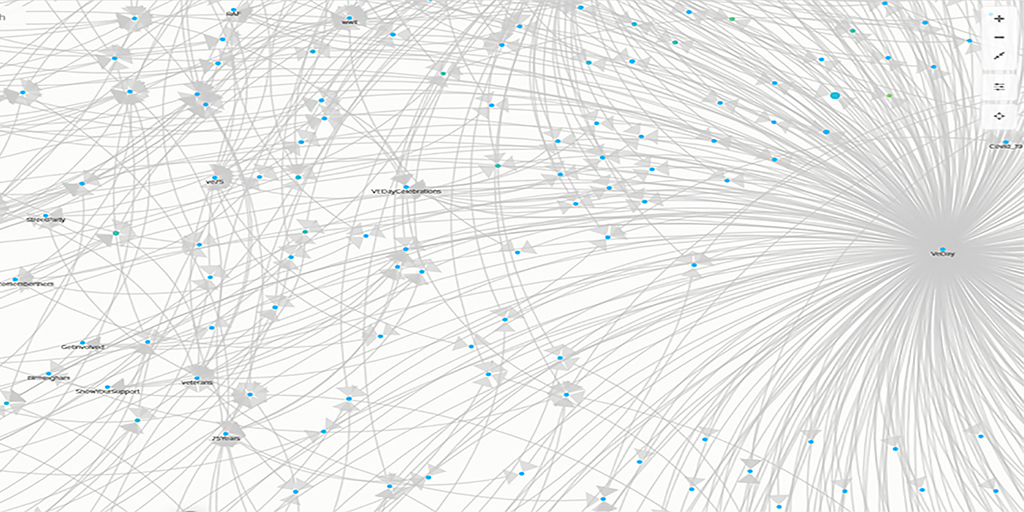
How can we archive online commemorations?
2020 marked the 75th anniversary of the liberation of many Nazi concentration camps and the end of WWII. From March, major commemorations planned to be held onsite and in-person were rapidly moved online. Amidst all of the challenges the Covid-19 Pandemic has presented museums, this shift to digital commemoration offers a unique opportunity for us to archive these events for the first time. This blog post considers what it might mean to archive a (digital) event.
In a previous post, I considered what happens to commemorations when they are forced to go online. Such ritualistic events usually depend on people making pilgrimage to a specific geographic location and performing particular acts synchronously together. Nevertheless, I did not perceive that there were radical changes in the essence of what commemorations are or how they are performed by their moving into digital spaces.
Nevertheless, there are elements of these commemorations that continue to be available to us in ways a lived experience of an in-person event cannot. For example, institutions recorded their ceremonies that were broadcast live via Facebook or YouTube, but perhaps more interestingly there exist digital footprints on social media of those who participated and shared their participation online using designated hashtags.
There are two questions that underpin the overarching investigation of this blog:
- How can we archive a (digital) event?
- In trying to capture the dynamics of an event is what we end up doing really archiving?
Archiving an Event
Although commemorations often follow the same pattern of rituals and order of ceremony year in and year out, they nevertheless are specific lived events of shared experience composed of multiple layers. Individuals make particular journeys to the ceremonial site, which may or may not include other people and other sites; groups may have other events organised on the periphery of the main ceremony, for example a survivors’ dinner or a conference of a particular memory organisation; during the ceremony itself, groups of people may communicate with others either about the ceremony, their relationship to the physical site, or indeed about things that might seem completely unrelated.
Events then are always simultaneously multifaceted and singular, and repetitions of previous arrangements which is why it has not seemed possible to archive them. If we freeze an event in time, capture it, give it a description and put it in a file (if this was even possible) then it ceases to be an event. Therefore, we have not archived the event. At best, we might archive ephemera related to it, for example invitations, programmes and posters or record official proceedings. These actions, though, ignore the very communal spirit essential to com-memoration.
However, things can change online as we can access the content of many back channels, including conversations on social media that may blur the boundaries between the private and the public.
Dynamic Digital Archives
Wolfgang Ernst has argued that digital technologies offer the potential to disrupt historical hierarchies and practices related to archiving. Computational archiving involves constant processes often happening at micro temporalities unperceivable to humans, for example a CPU requesting data from memory or an external network, and data being destroyed from internal memory when it is no longer immediately needed.
Considering the machinic dimensions of digital archives, Ernst claims that such creations can disrupt notions of the archive as retaining objects in static conditions with fixed meaning attributed to them via cataloguing. Of course, we must be wary of immediately assuming a completely radical shift away from cataloguing in digital realms, given the emphasis on tagging and the cultural need to select appropriate or popular tags in order to encourage visibility of items. We must also acknowledge the inherent politics written into machine learning training sets, which can encourage computer systems to read images through dominant ideological perceptions, much like we can accuse the historical archons of writing into traditional archives.
Nevertheless, digital visualisation techniques can allow us to capture digitally-born data in ways that prevent its dynamism being lost for the sake of objectifying it into static content for repositories that can simply be looked at rather than experienced. Some have called this a move towards the post-archive age. Indeed, it is valid to ask, if we are resisting all of the tendencies of the archive as we know it, are we still really archiving? What does it mean to archive in the digital age?
Archiving Online Commemorations
Below, I consider three potential methods for archiving online commemorations. These are based on very quick data scrapes to present possibilities, rather than extensively developed models. I evaluate three models here which use really basic digital tools that could be replicated by anyone with a few minutes to spare.
- Record a Broadcast
Many institutions have taken to record the broadcast element of their event, for example the UK YomHaShoah commemoration. On the original website when the ceremony was live, there was a twitter feed, which as you can see from the screenshot below is no longer available and if it was, and the time period not adjusted, would probably not display content relevant to this specific event.
The problem with only keeping the broadcast is that it archives only the official content of the commemoration. One of the most powerful segments of this event was synchronous candle lighting in which viewers followed the command on the live stream to light their candle, and then shared their lit candle on Twitter using the hashtags #UKYomHaShoah, #TogetherAsOne and #yellowcandle. Anyone now watching the recorded broadcast can only imagine what was happening offscreen, despite the fact there is a digital footprint that shows some of the participants engaging in this ritualistic behaviour. As our online discussion between digital and physical spaces show, there is often a variety of digital channels complement an apparent main, live event.
These online videos are really useful, but would be best archived with other data visualisation that captures participant behaviour as well as the ceremony’s speakers.
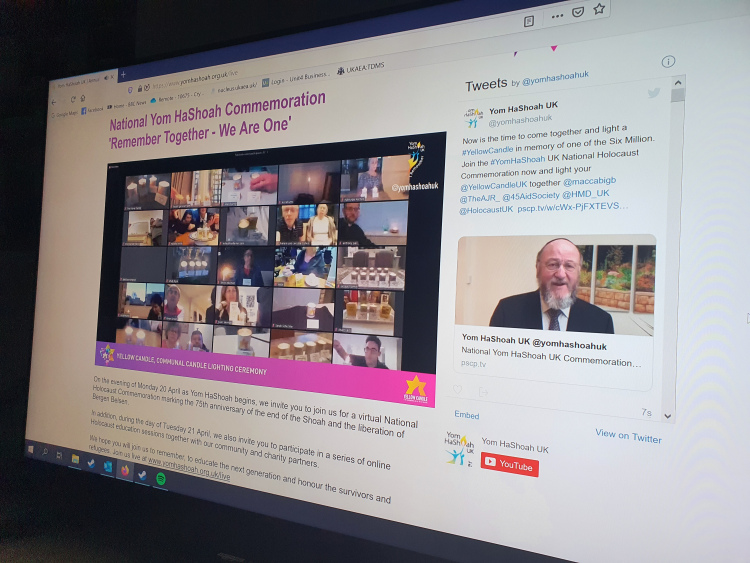
- Tag Clouds
These visualisations have lost their novelty in the digital humanities as so many, far more sophisticated, ways of presenting data have developed. Nevertheless, they throw up something interesting on this occasion. In this and the next example, I use my own data scrape of Twitter posts featuring the hashtag #VEDay in May 2020 to illustrate connections that may not have come to mind when we, as researchers or heritage professionals, think about this event.
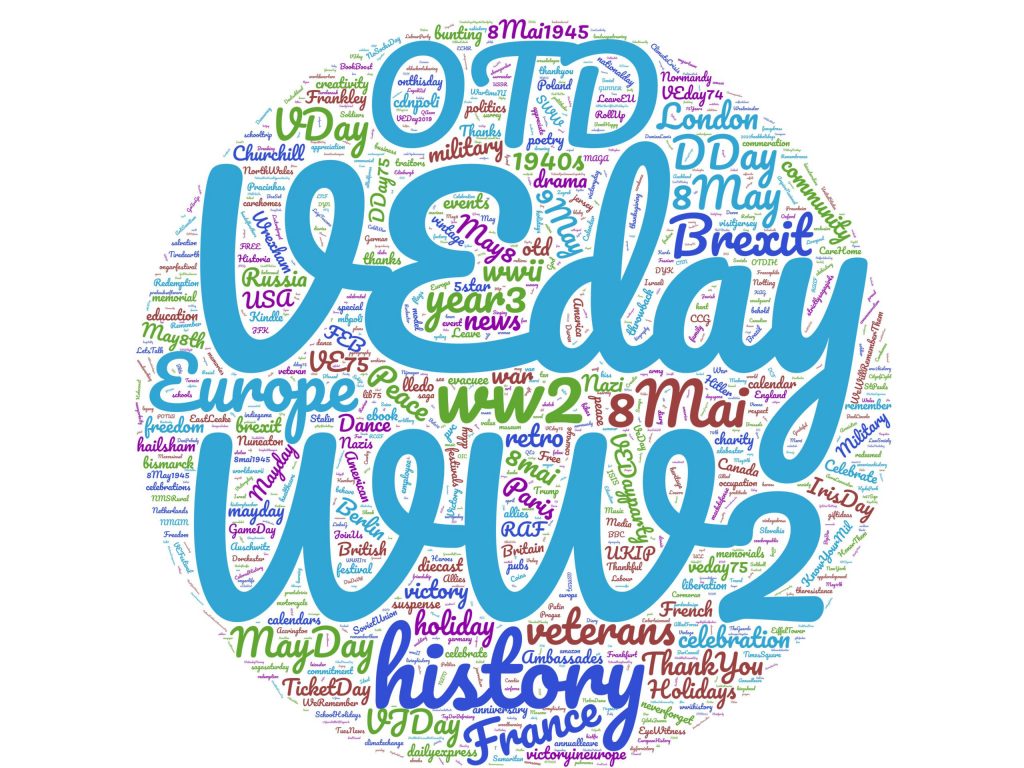
It’s a quick visualisation of connections that allows us to see what participants relate to an event. This might help organisations to think about what to include in their commemorations to attract engagement in the future. It is also useful because we can compare tag clouds for VE DAY and other commemorations of the end of WWII with liberation events related to concentration camps, and get a quick picture comparison of how people might commemorate such events. This helps us to begin to build a picture of cultures of commemoration. These simple visualisations draw attention to the hashtags people use to talk about commemorations. This knowledge can help organisations to widen their reach in the future.
However, tag clouds offer only a surface level presentation of hashtag data, and more interrogation of the details of tweets will always be needed.
How did I create this tag cloud?
I used GetOldTweets3 and wrote a quick scraping programme in Python (with the help of my wonderful debugging partner at home!), then copied and pasted the hashtag column into a document of its own and imported this into the Wordcloud online.
- Network Visualisation
A more dynamic tool, this can help us to really dig into the dynamism of participation, by showing us how different hashtags and posts are connected. We can look more closely at posts that are so different in their content that they are on the periphery, and we can see which hashtags are closely related to our selected focus. 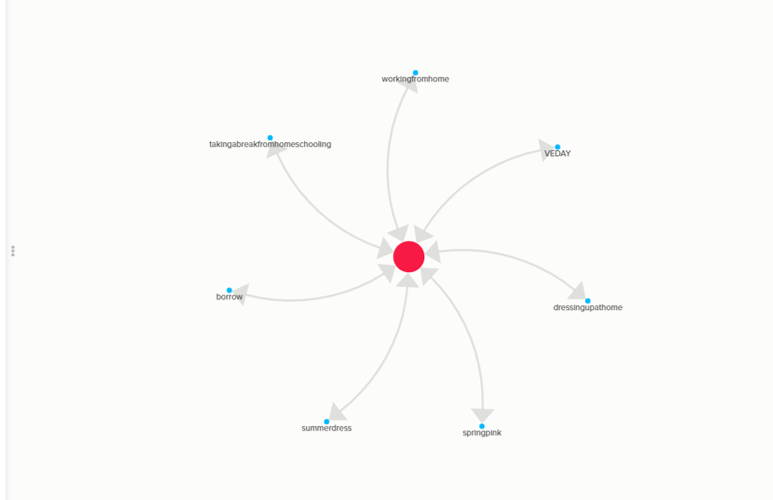
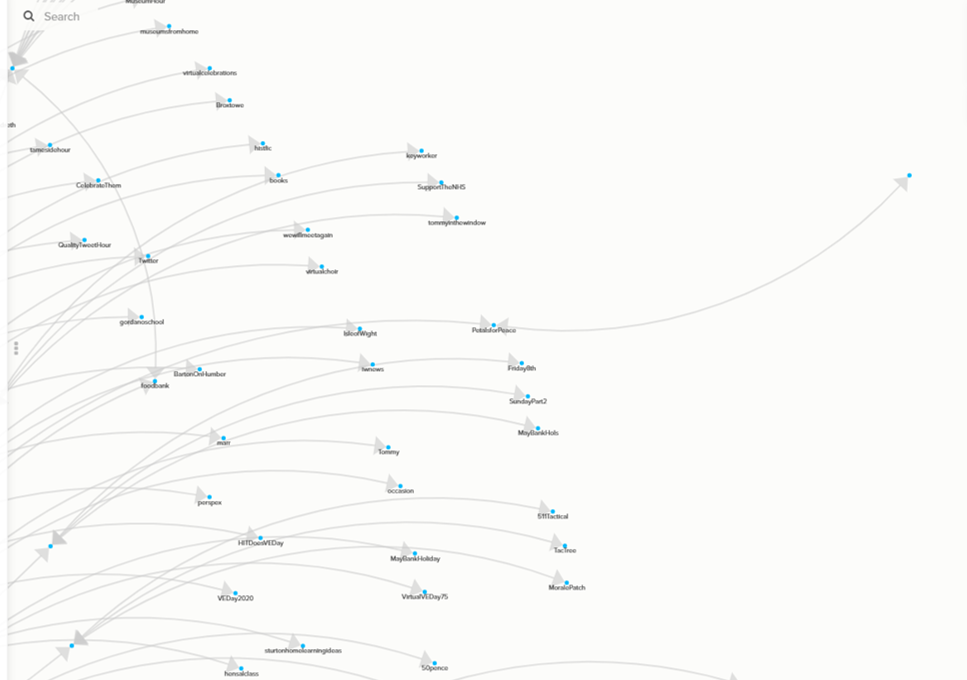
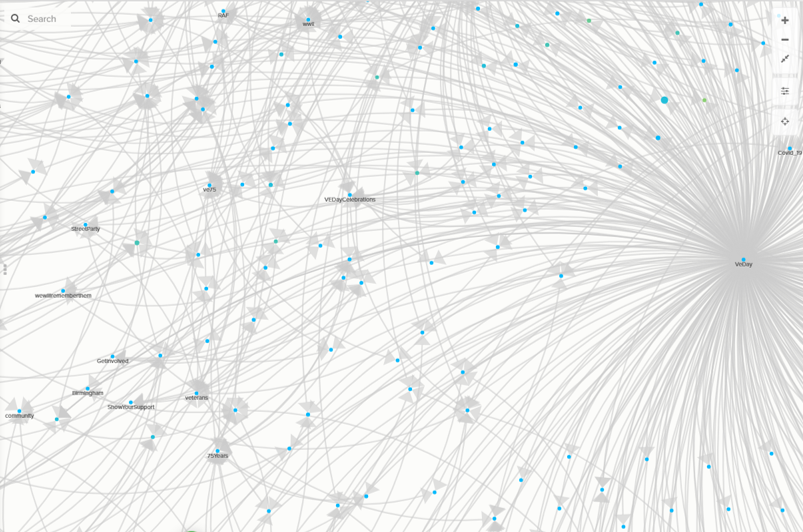
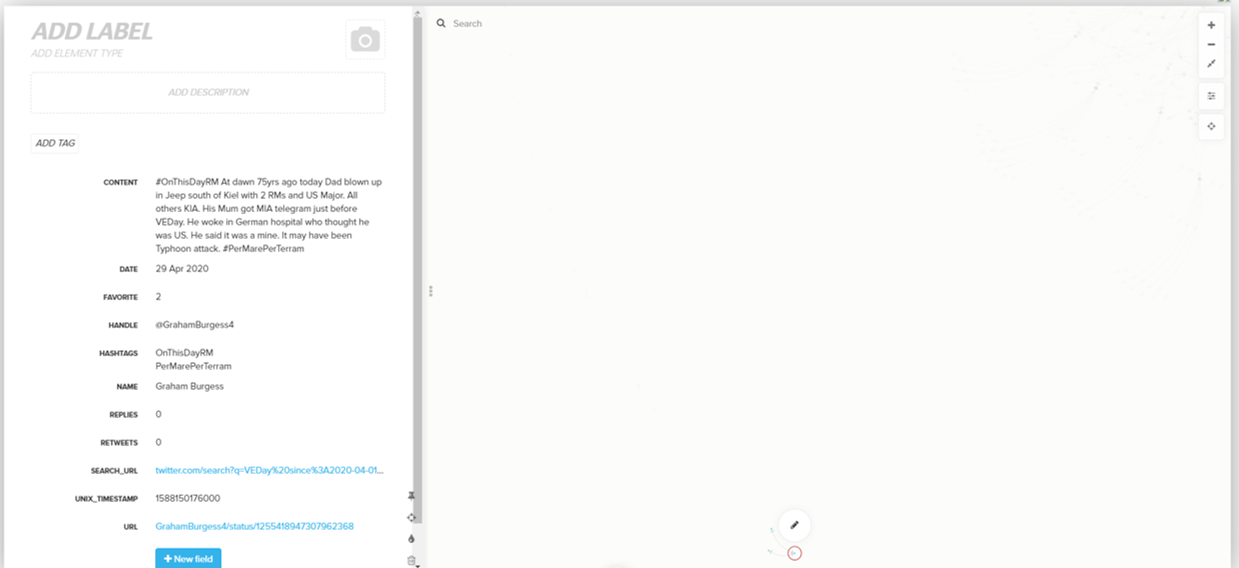
You can visit the full, interactive visualisation here.
How did I create this visualisation?
I imported the data above into kumu, which is available for free, online. You can also create a far bigger range of visualisations working with Python and other tools in combination.
What is the lesson to be taken from this exercise?
Commemorations are social, interactive events. Social media participation lets us see how people communicated via back channels alongside official broadcast material. Studying this content can help memory organisations identify the types of conversations people relate to their events, see who and how people participate at the blurred boundary between private and public spaces, and could help widen their future reach by considering the types of hashtags people use to discuss commemorations.